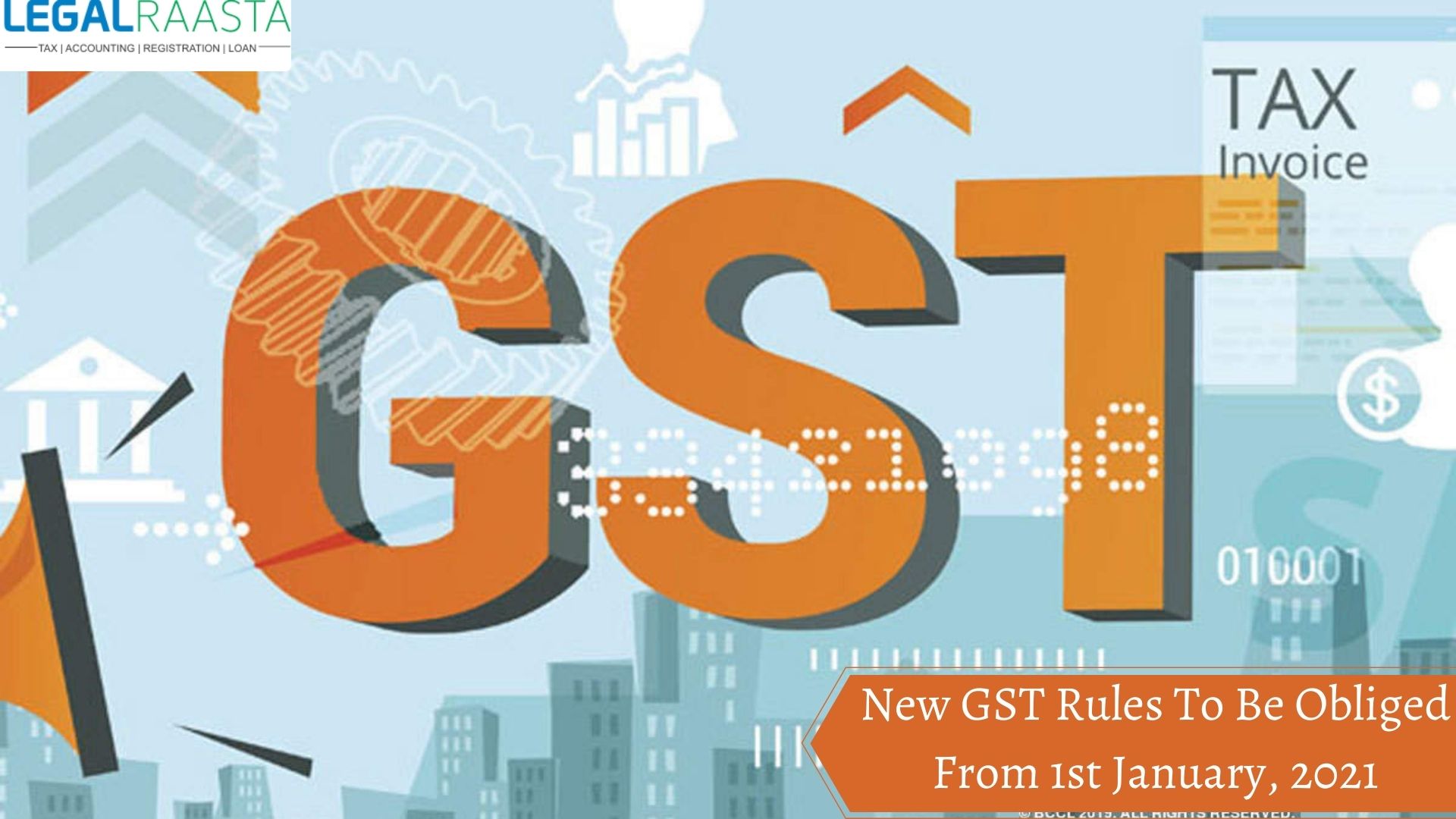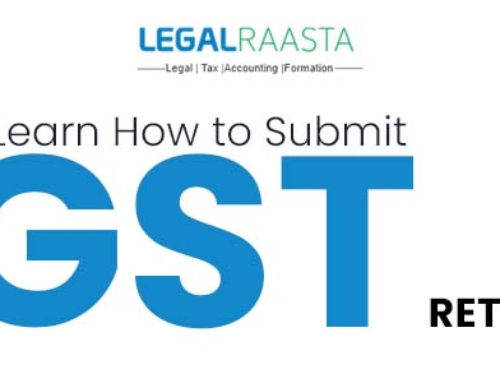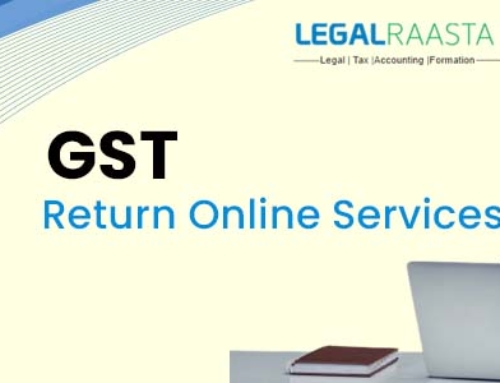To help in the expansion of small businesses, government has decided to modify the new GST rules, which will be applicable from 1st January 2021.
If you belong to the category of small and medium businessmen, to ease your burden on taxpaying, the government has decided to remove the quarterly filing of GST return with monthly payments.
The government announced this good news on 5th December. On the following day, the government launches the QRMP scheme (Quarterly Filing of Return with Monthly Payment).
As per the reports by the government, the QRMP scheme will have it’s impact on around 92 lakh taxpayers, this constitutes around 92% of the current tax base in the GST domain.
With the onset of this scheme, it will be sufficient for the taxpayers to file just eight GST returns in a financial year. These new GST rules will include “Four GSTR1 and Four GSTR 3B”. Presently, according to the current GST scheme, taxpayers are allowed to file 16 returns in a financial year. GST payment can be made every month by the taxpayers, either through challan by self-assessment of monthly liability or the taxpayer can make payment by making 35% of their cash liability of GSTR-3B of the previous quarter.
What is GST?
Contents
- What is GST?
- Who all are eligible for the scheme?
- What are the advantages associated with this scheme?
- New dates announced by the government for quarterly GSTR-1
- Due dates announced by the government for filing of GSTR-1 form
- Furnishing of form GSTR-3B for the following six months
- Categories included in state A
- Filling of GST annual return for the financial year 2019-2020 to be made optional
- Filing of GST in the Covid era
GST (good and services tax) is a value added tax which is levied on various goods and services such as “Frozen Vegetables, Plastic Waster, Electronic Items, Tour Operation Services, Etc.” These goods and services are sold for domestic consumption. The consumer is obliged to pay for the GST but the businesses offering those goods and services pay to the government.
Who all are eligible for the scheme?
Only those small and medium businessmen would be eligible for the scheme, whose:
- Total annual turnover was up to Rs.5 crore in the last financial year.
- And who have filed for their GSTR-3B return of October month at least by 30th
What are the advantages associated with this scheme?
- Small and medium businessmen will be able to pay their monthly taxes by either pre-filed challan or cash ledger.
- In case a businessmen opts for the IFF facility, they would also be eligible to receive ITC even after the cut-off date of IFF.
- As new GST rules will cut down the number of GST returns from 16 to 8, there will be a huge difference in the professional expenses of the taxpayers from January 2020.
- With the new GST rules, ITC (Input Tax Credit) will be provided only on report, invoices. Thus, it will help the government to stop fake invoices frauds.
- An optional feature of IFF (Invoice Filing Facility) will also be brought out by the QRMP scheme. This feature will allow the businessmen to file and upload their invoices quarterly. Along with this, the QRMP scheme will allow the businessmen to upload their invoices within the first and second months. This shall help the businessmen to address the high demands from the recipients.
New dates announced by the government for quarterly GSTR-1
New dates have been notified by CBIC (Central Bureau of Indirect Taxes and Customs) for filing GSTR-1 on a quarterly basis for the coming 2 quarters.
| Quarter under-reporting | Due date |
| October 2020 to December 2020 | Up to 13th January 2021 |
| January 2021 to march, 2021 | Up to 13th April 2021 |
All those Businessmen have to register for the quarterly return, who have business with an aggregated turnover of up to 1.5 crores for the previous financial year or the current financial year. Registered businessmen have to submit the details of goods and services in the GSTR-1 form.
Due dates announced by the government for filing of GSTR-1 form
The dates notified by the CBIC for filing of GSTR-1 form for the coming six months i.e. October 2020 to march, 2021 are as follows:
| Month | Due date |
| October 2020 | 11th November 2020 |
| November 2020 | 11th December 2020 |
| December 2020 | 11th January 2021 |
| January 2021 | 11th February 2021 |
| February 2021 | 11th March 2021 |
| March 2021 | 11th April 2021 |
Furnishing of form GSTR-3B for the following six months
Prescribed dates for the filing of GSTR-3B for the coming six months, starting from October 2020 to March, 2021 have been provided by the central government.
The following tables show the mode of payment and the last date for discharging the tax liability:
| Month | Aggregate turnover of more than Rs.5 crore in the previous financial year | Aggregate turnover of more than or equal to Rs.5 crore in the previous financial year | |
| For taxpayers in the state A category | For taxpayers in the state B category | ||
| October 2020 | 20th November 2020 | 22nd November 2020 | 24th November 2020 |
| November 2020 | 20th December 2020 | 22nd December 2020 | 24th December 2020 |
| December 2020 | 20th January 2021 | 22nd January 2021 | 24th January 2021 |
| January 2021 | 20th February 2021 | 22nd February 2021 | 24th February 2021 |
| February 2021 | 20th March 2021 | 22nd March 2021 | 24th March 2021 |
| March 2021 | 20th April 2021 | 22nd April 2021 | 24th April 2021 |
Categories included in state A
State A: All those taxpayers whose main place of business is in the following states “Gujarat, Chhattisgarh, Madhya Pradesh, Goa, Karnataka, Maharashtra, Tamil Nadu, Kerala, Andhra Pradesh, and Telangana”. The union territories which will be included in state A are “Daman and Diu, Dadar and Nagar haveli, Andaman and Nicobar islands, Puducherry and Lakshadweep islands,”
Categories included in state B
State B: All those taxpayers whose main place of business is in the following states “Punjab, Haryana, Uttrakhand, Himachal Pradesh, Uttar Pradesh, Rajasthan, Sikkim, Bihar, Nagaland, Arunachal Pradesh, Manipur, Mizoram, Meghalaya, Assam, Tripura, Odisha or Jharkhand, and West Bengal”. The union territories which will be included in state B are “Jammu and Kashmir, Delhi, Chandigarh, and Ladakh.”
Mode of payment to be followed:
| Nature of discharge | Debited from |
| Tax liability | Electronic cash ledger or electronic cash ledger |
| Interest, fees, penalty, and other amount to be paid | Electronic cash ledger |
Filling of GST annual return for the financial year 2019-2020 to be made optional
As suggested by the council of GST, the central government issued that the filing of annual return of the GST act, 2017 is to be made optional. This shall be eligible for all those businessmen who have a turnover of less than Rs.Two crores of the financial year 2017-18, 2018-19, 2019-20.
Filing of GST in the Covid era
Amidst the Covid situation, the country is already facing many challenges. One such challenge faced by the country is the filing of returns for the month-end which also includes the last date for filing of GST audit along with tax audit returns on 31st October 2020.
The situation of India worsened after covid-19. At this time, having 31st October as the last date to file for tax audit and GST audit is neither desirable nor practical. The impact on financial professionals and businessmen was similar in terms of “Health Care, Revenue, Business Expansion, Liquidity, Staff Shortage, Etc.”
Looking at this hardship which is endured by the financial professional and businessmen, CBIC came in aid for them and postponed the filing date of GST return and tax return.
Even after the Covid era for the year 2020, in future too there would be few financial drawbacks. To support the small and medium businessmen so that they don’t afloat due to the financial crisis, the step by the central government to bring new GST rules is highly appreciated.
We provide all kinds of legal services like “GST Advisory Service,GST Registration” and many more. So, contact the expert team of “LegalRaasta”, for a completely smooth and hassle-free process.
We provide all kinds of legal services like Trademark Registration, Company Registration, FSSAI License, and many more. So, contact the expert team of “LegalRaasta”, for a completely smooth and hassle-free process.
Related Links






